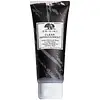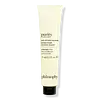What's inside
What's inside
 Key Ingredients
Key Ingredients

 Benefits
Benefits

 Concerns
Concerns

 Ingredients Side-by-side
Ingredients Side-by-side

Water
Skin ConditioningMyrtus Communis Leaf Water
MaskingKaolin
AbrasiveBentonite
AbsorbentButylene Glycol
HumectantMontmorillonite
AbsorbentPolysorbate 20
EmulsifyingPEG-100 Stearate
Charcoal Powder
AbrasiveXanthan Gum
EmulsifyingLecithin
EmollientPEG-150 Distearate
EmulsifyingPropylene Glycol Stearate
Skin ConditioningSorbitan Laurate
EmulsifyingGlycerin
HumectantPropylene Glycol Laurate
Skin ConditioningSimethicone
EmollientCaprylyl Glycol
EmollientEthylhexylglycerin
Skin ConditioningHexylene Glycol
EmulsifyingTrisodium EDTA
Dehydroacetic Acid
PreservativePhenoxyethanol
PreservativeWater, Myrtus Communis Leaf Water, Kaolin, Bentonite, Butylene Glycol, Montmorillonite, Polysorbate 20, PEG-100 Stearate, Charcoal Powder, Xanthan Gum, Lecithin, PEG-150 Distearate, Propylene Glycol Stearate, Sorbitan Laurate, Glycerin, Propylene Glycol Laurate, Simethicone, Caprylyl Glycol, Ethylhexylglycerin, Hexylene Glycol, Trisodium EDTA, Dehydroacetic Acid, Phenoxyethanol
Water
Skin ConditioningKaolin
AbrasiveSolum Diatomeae
AbrasivePropanediol
SolventBentonite
AbsorbentDecyl Glucoside
CleansingAlcohol Denat.
AntimicrobialLauryl Glucoside
CleansingPropylene Glycol
HumectantPolysilicone-11
Pvp
Emulsion StabilisingXanthan Gum
EmulsifyingSalicylic Acid
MaskingSodium PCA
HumectantSodium Citrate
BufferingCitric Acid
BufferingParfum
MaskingChlorphenesin
AntimicrobialLinalool
PerfumingDisodium EDTA
Limonene
PerfumingLaureth-12
EmulsifyingPhenoxyethanol
PreservativeGeraniol
PerfumingVanillyl Butyl Ether
MaskingEthylhexylglycerin
Skin ConditioningCI 77891
Cosmetic ColorantWater, Kaolin, Solum Diatomeae, Propanediol, Bentonite, Decyl Glucoside, Alcohol Denat., Lauryl Glucoside, Propylene Glycol, Polysilicone-11, Pvp, Xanthan Gum, Salicylic Acid, Sodium PCA, Sodium Citrate, Citric Acid, Parfum, Chlorphenesin, Linalool, Disodium EDTA, Limonene, Laureth-12, Phenoxyethanol, Geraniol, Vanillyl Butyl Ether, Ethylhexylglycerin, CI 77891
 Reviews
Reviews

Ingredients Explained
These ingredients are found in both products.
Ingredients higher up in an ingredient list are typically present in a larger amount.
Bentonite is an aluminium phyllosilicate clay with great absorbent properties. The name 'bentonite' comes from the area where the largest source is found: Fort Benton, Wyoming.
As a clay, bentonite is often used to absorb excess oil and provide exfoliation. It has also been shown to have some antibacterial and anti-inflammatory properties. Studies show bentonite was effective at calming dermatitis from poison ivy and in diaper dermatitis of infants. Bentonite has also been shown to act as a barrier against toxic compounds on your skin.
Sunscreens containing bentonite display higher water resistance and stay on the skin for much longer. The sunscreens containing bentonite also show higher potency and UV light absorbtion.
Bentonite is naturally created from volcanic ash and several natural weathering/hydrothermal processes.
A common usage of bentonite is removing excess protein from white wines. Bentonite contains a property of being able to absorb large amounts of protein from aqueous solutions.
Phyllosilicate clay has a structure formed by sheets.
Learn more about BentoniteEthylhexylglycerin (we can't pronounce this either) is commonly used as a preservative and skin softener. It is derived from glyceryl.
You might see Ethylhexylglycerin often paired with other preservatives such as phenoxyethanol. Ethylhexylglycerin has been found to increase the effectiveness of these other preservatives.
Kaolin is a clay. It is used for oil control and to help minimize pores. Like other clays, kaolin has the ability to absorb excess sebum or oil. This can help clean out pores and mattify the skin.
Some types of kaolin may have exfoliating properties. When water is added to kaolin, it becomes a paste with small abrasive particles.
Most kaolin is a white color, but may be pink/orange/red depending on where it comes from.
The name 'kaolin' comes from a Chinese village named 'Gaoling'. Kaolin clay comes from rocks rich in kaolinite. Kaolinite, the mineral, has a silicate layered structure. Kaolinite is formed from chemical weathering of aluminum siilicate minerals.
Besides skincare, kaolin is commonly used to make glossy paper, in ceramics, toothpaste, and as medicine to soothe stomach issues.
Learn more about KaolinPhenoxyethanol is a preservative that has germicide, antimicrobial, and aromatic properties. Studies show that phenoxyethanol can prevent microbial growth. By itself, it has a scent that is similar to that of a rose.
It's often used in formulations along with Caprylyl Glycol to preserve the shelf life of products.
Water. It's the most common cosmetic ingredient of all. You'll usually see it at the top of ingredient lists, meaning that it makes up the largest part of the product.
So why is it so popular? Water most often acts as a solvent - this means that it helps dissolve other ingredients into the formulation.
You'll also recognize water as that liquid we all need to stay alive. If you see this, drink a glass of water. Stay hydrated!
Learn more about WaterXanthan gum is used as a stabilizer and thickener within cosmetic products. It helps give products a sticky, thick feeling - preventing them from being too runny.
On the technical side of things, xanthan gum is a polysaccharide - a combination consisting of multiple sugar molecules bonded together.
Xanthan gum is a pretty common and great ingredient. It is a natural, non-toxic, non-irritating ingredient that is also commonly used in food products.
Learn more about Xanthan Gum